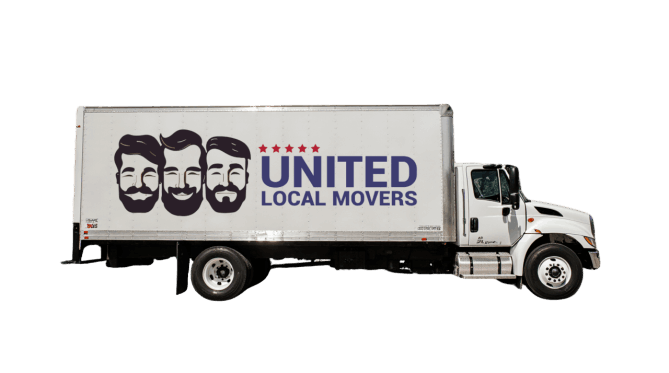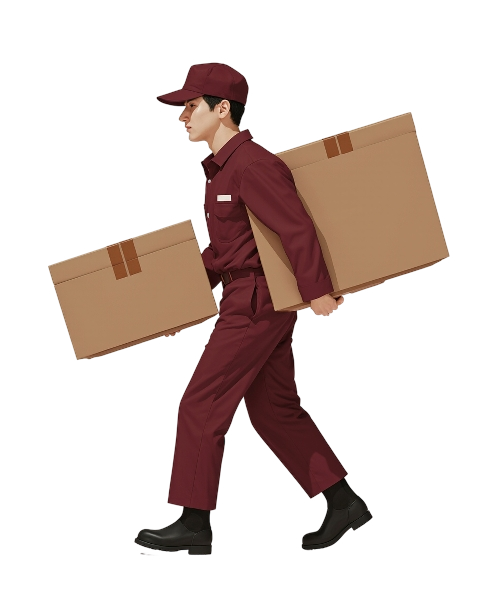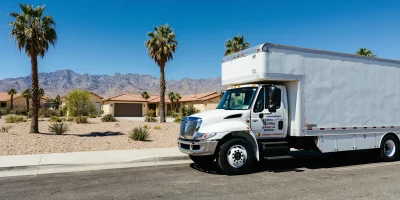Relocating from San Francisco to Austin is one of the most popular moves in recent years, as people trade the Bay Area’s sky-high housing costs and dense urban living for Texas’ thriving capital city. San Francisco may offer iconic views, cultural energy, and tech industry prestige, but it also comes with steep expenses and limited space. Austin, meanwhile, has earned a reputation as a booming tech hub with a vibrant cultural scene, live music, diverse neighborhoods, and a cost of living that, while rising, is still far more manageable than San Francisco’s. This article will guide you through estimated moving costs, how estimates are calculated, the moving timeline, cost-of-living comparisons, housing, healthcare, crime and safety, transportation, and why United Local Movers is the partner you need for this major interstate relocation.
Estimated Costs
The distance between San Francisco and Austin is roughly 1,750 miles, making it a significant long-distance interstate move. Average moving costs range between $4,500 and $9,000, depending on household size, services requested, and time of year. A one-bedroom move with minimal furniture may be closer to the lower end, while a full-service move for a large home can reach the higher range. Packing services, furniture disassembly and assembly, and storage-in-transit can all add to the price. Seasonality also plays a role—summer and end-of-month moves are generally more expensive due to higher demand. Since this is a cross-state move, preparing a flexible budget helps manage potential extras and avoids last-minute surprises.
| Home Size | Typical Range | Notes |
|---|---|---|
| Studio / 1-BR | $4,500 – $5,500 | Best value if self-packed, minimal items. |
| 2-Bedroom | $5,500 – $7,000 | Includes more furniture, requires moderate crew. |
| 3-Bedroom | $6,500 – $8,000 | Larger truck, full crew, and longer load/unload time. |
| 4-Bedroom+ | $7,500 – $9,000+ | Often includes full-service packing and storage. |
How Estimates Are Calculated
Estimates for moving from San Francisco to Austin are based on several factors. Distance is the largest cost driver, as a 1,700+ mile route requires multiple days of driving, fuel, and crew expenses. The weight and volume of your belongings determine truck size and space. Accessibility at your San Francisco residence—such as narrow staircases, street parking restrictions, or elevators—may increase labor costs. In Austin, unloading is often easier thanks to suburban layouts, though downtown apartments may present challenges. Additional services like professional packing, specialty crating, or temporary storage add to the total. Reliable movers will provide transparent quotes with clear explanations of each cost component, helping you customize services according to your budget and timeline.

Ready to get moved? Get a FREE quote now
Book your move easily and stress-free!
Timeline
A move of this distance typically takes between 10 and 21 days, depending on scheduling and delivery windows. Packing and loading generally take two to three days, especially for larger households. Transit from San Francisco to Austin requires three to five days of driving, depending on stops, traffic, and routing. Unloading and setup usually take one to two days. If you choose full-service packing or need storage-in-transit, expect longer timelines. Booking movers at least six weeks in advance is recommended to secure the best delivery window, especially during peak season. Communicating your preferred delivery dates early helps movers coordinate efficiently and minimize delays.
| Phase | Typical Window | Pro Tips |
|---|---|---|
| Packing & Loading | 2–3 days | Sort belongings and label boxes for smoother unpacking. |
| Transit | 3–5 days | Keep essentials with you for travel and initial setup. |
| Unloading & Setup | 1–2 days | Schedule furniture placement ahead of time. |
Key Considerations
Several practical considerations come with relocating to Austin. Parking permits or truck restrictions may apply in San Francisco, while Austin generally offers easier access in residential neighborhoods. Climate is another important factor—San Francisco’s mild, foggy weather is very different from Austin’s hot, humid summers. Pack heat-sensitive items carefully and plan for higher air-conditioning usage in your new home. For those moving into master-planned communities or apartment complexes in Austin, check for HOA or management rules about truck access and moving hours. Finally, consider the cultural adjustment: Austin is vibrant, welcoming, and rapidly growing, but suburban sprawl and car-dependency contrast with San Francisco’s urban walkability.
Cost of Living
The cost of living is one of the biggest drivers for this move. Austin, while not cheap compared to other Texas cities, is still significantly more affordable than San Francisco. Housing, in particular, is far less expensive, and utilities, dining, and everyday expenses are also more manageable. Here’s a snapshot comparison:
| Category | San Francisco | Austin |
|---|---|---|
| Average Rent | $3,500+ | $1,900 |
| Median Home Price | $1.4M | $540K |
| Utilities | $220 | $170 |
| Restaurant Meal | $25–30 | $15–20 |
Housing
Austin’s housing market is one of its biggest attractions for newcomers. While prices have risen in recent years, they remain dramatically lower than San Francisco’s. Austin offers a wide range of housing options, from downtown condos to suburban single-family homes with yards. Popular neighborhoods include South Congress (SoCo) for its cultural vibe, Mueller for family-friendly living, and Circle C Ranch for spacious suburban homes. Compared to San Francisco’s tight competition and sky-high mortgages, Austin gives buyers and renters more breathing room and options that fit a variety of budgets.
Healthcare
Austin provides quality healthcare options, including Ascension Seton Medical Center, St. David’s HealthCare, and Dell Seton Medical Center. While San Francisco is home to world-class facilities, Austin’s healthcare system is modern, accessible, and continues to expand with the city’s rapid growth. Specialized care is available locally, and families can find strong pediatric, urgent care, and general medical services across the city. It’s best to transfer medical records ahead of time and confirm insurance networks to ensure a smooth transition.

Ready to get moved? Get a FREE quote now
Ready to get moved? Get a FREE quote now
Crime & Safety
Safety is always a priority when relocating. San Francisco struggles with property crimes, while Austin faces challenges tied to rapid population growth, though it generally has lower crime rates than many major U.S. cities. Crime varies significantly by neighborhood in both cities, so it’s crucial to research specific areas. Families often choose suburban communities in Austin that emphasize safety, schools, and community amenities. Online resources, local forums, and police crime maps can help you make informed choices when selecting your new neighborhood.
Transportation
Transportation is one of the biggest lifestyle adjustments. San Francisco residents often rely on BART, Muni, and walkable neighborhoods, while Austin is highly car-dependent. Although CapMetro provides buses and a commuter rail line, most residents rely on personal vehicles. Commute times vary depending on whether you live downtown or in the suburbs, but Austin traffic is notorious during peak hours. Owning a car is essential, and you should factor in gas, insurance, and maintenance costs when planning your budget. On the bright side, parking is much easier than in San Francisco, and Austin continues to invest in transit improvements.
United Local Movers
Making the move from San Francisco to Austin can feel overwhelming, but United Local Movers is here to make it simple. We specialize in long-distance interstate moves and know the unique challenges of relocating from California to Texas. From expert packing and secure transportation to timely delivery and setup, our services are designed to minimize stress and maximize efficiency. We also provide flexible storage options, furniture assembly, and transparent pricing, so you know exactly what to expect. Learn more or request a personalized quote at United Local Movers.
Conclusion
Relocating from San Francisco to Austin is more than just a change of address—it’s a chance to reset your lifestyle, budget, and long-term goals. Austin offers a thriving job market, vibrant culture, and affordable living compared to San Francisco’s high costs and dense city life. With United Local Movers by your side, you’ll enjoy a smooth and professional relocation that lets you focus on the excitement of starting fresh in Texas’ capital city.





